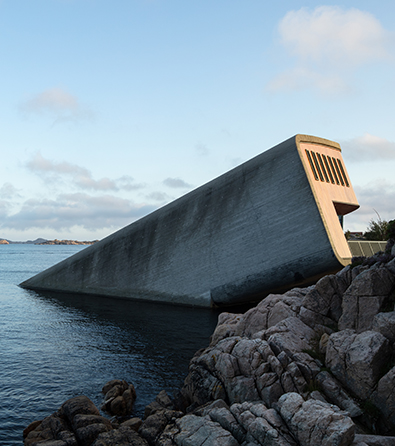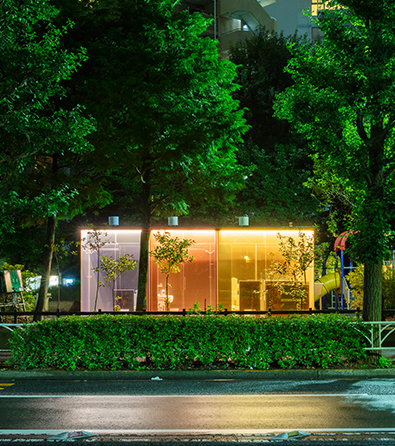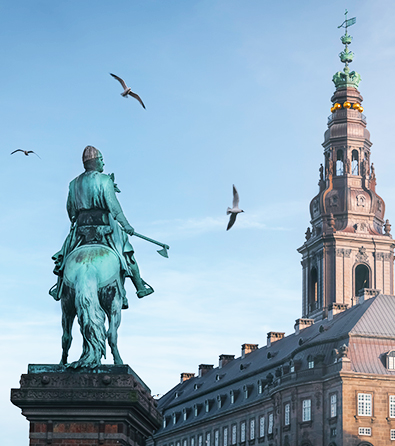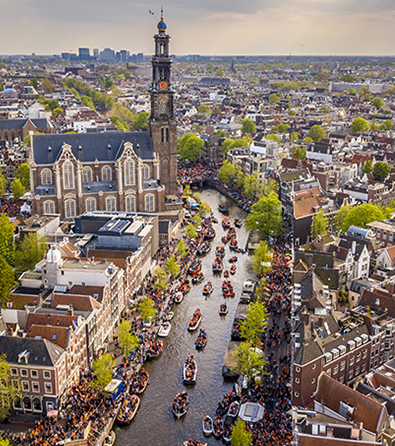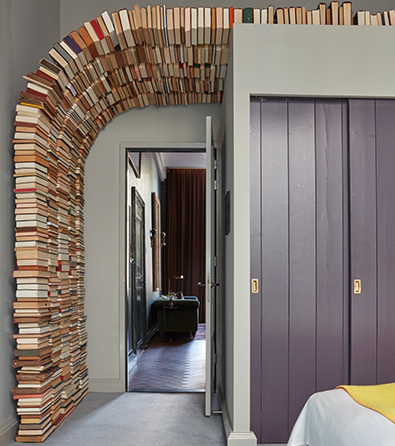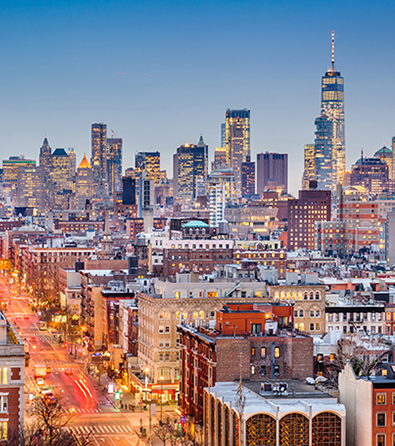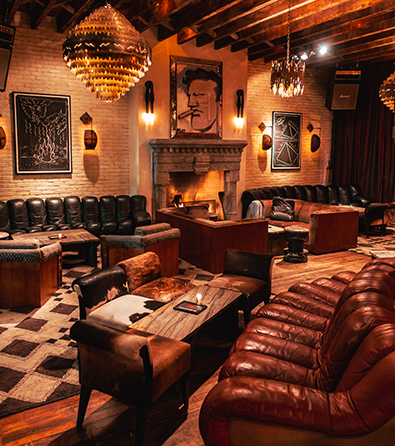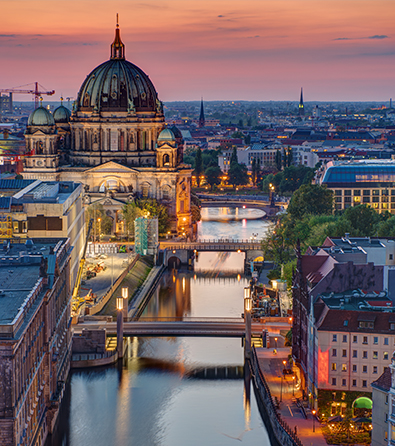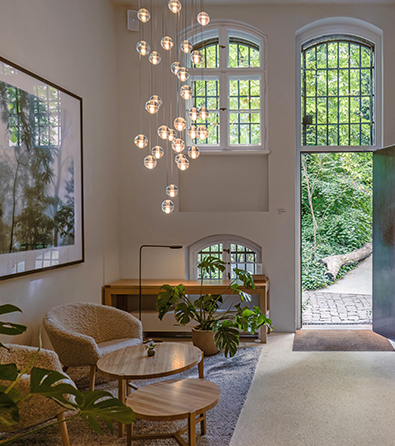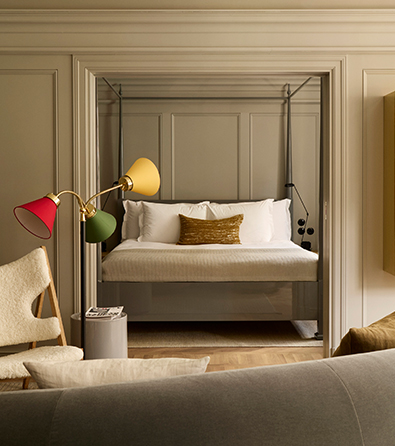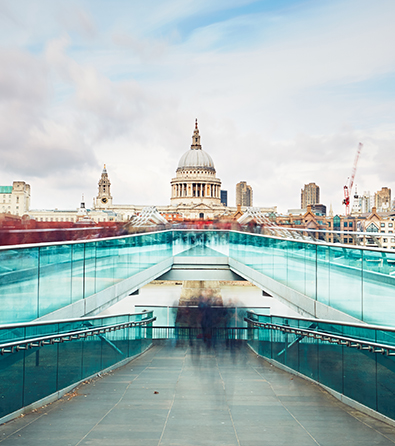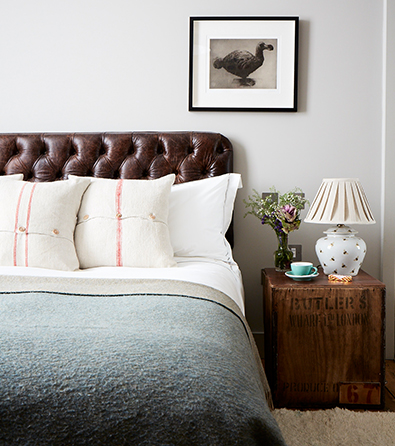Belfast is a city where resilience meets innovative creativity. Once known for shipbuilding and political unrest, it has evolved into a thriving hub for art and creativity. From world-class museums like Titanic Belfast and the Ulster Museum to cutting-edge galleries such as The MAC and Golden Thread Gallery, the city offers a rich blend of historical depth and contemporary flair. Its dynamic street art scene, public installations, and revitalized neighborhoods like the Cathedral Quarter showcase how Belfast has embraced the arts as a vital part of its social and urban revival. This guide highlights the city’s most inspiring cultural venues and experiences for art lovers, history buffs, and curious travelers alike.
To access our exclusive Belfast Treasure Map, simply click the attached link and become a Culture Treasures member. The map pins every place in this guide and adds bonus cafés, boutiques and cultural venues. Planning your stay? Discover our top hotels recommendations in Belfast, featured at the end of this guide. For travel gear, explore our urban travel essentials for exploring the city in style, and our long flight essentials to make your journey more comfortable.
In 2018, I traveled to Belfast to learn about the struggles of a society still coming to terms with its bloody history. This journey led me to the creation of the short documentary Artopia #Belfast, showcasing memorable encounters with some of the leading artists, designers, and curators in the city. As an art and design enthusiast myself, I want to share my Belfast city guide with those who seek to experience the city’s thriving art scene. With a rich history and impressive collection of art and design venues, Belfast offers a diverse range of cultural experiences that cater to all art enthusiasts. Explore the city’s galleries, museums, and public art installations, and immerse yourself in its vibrant cultural scene.
Top Contemporary Art Museums and Galleries in Belfast;
The MAC (Cathedral Quarter)
Why go: Belfast’s leading contemporary arts center, showcasing bold exhibitions, performance art, and cultural events in a striking modern building.
Tip: Visit the in-house café before or after exploring the galleries, and check the schedule for live performances during your stay.
The MAC (Metropolitan Arts Centre) is a cornerstone of Belfast’s cultural life and a must-visit for anyone interested in contemporary art, theater, and design. Located in the heart of the vibrant Cathedral Quarter, the MAC opened its doors in 2012 and has since become a hub for innovative visual art exhibitions, experimental theater, live music, dance, and performance. Its three gallery spaces offer a rotating program of exhibitions featuring both established and emerging artists from Northern Ireland and around the world.
The building itself is a striking piece of architecture, designed by local architect Hacket Hall McKnight. The structure’s minimalistic concrete and glass facade contrasts with the historic character of the surrounding neighborhood, making it a landmark of modern design in Belfast. Inside, visitors will find gallery spaces, two theaters, rehearsal rooms, a café-bar, and a sculpture garden.
Ulster Museum (Botanic Gardens)
Why go: A must-visit for art, archaeology, and natural history lovers, this is Northern Ireland’s largest museum with diverse and expertly curated collections.
Tip: Combine your visit with a stroll through the beautiful Botanic Gardens or a trip to the nearby Palm House and Queen’s University.
Located in the heart of Belfast’s Botanic Gardens, the Ulster Museum is Northern Ireland’s largest and most comprehensive museum, offering a fascinating journey through art, history, and science. Founded in 1821 as the Belfast Natural History and Philosophical Society, it began public exhibitions in 1833 and was granted national museum status in the 1920s. The museum as it stands today, rebuilt and modernized over decades, is part of National Museums Northern Ireland and features a striking Brutalist-style extension added in the late 1960s, designed by architect Francis Pym.
Inside, visitors will find a wide-ranging collection spanning fine art, applied and decorative arts, archaeology, natural sciences, and ethnography. Notable highlights include prehistoric Irish artifacts, the Spanish Armada gallery, ancient Egyptian relics, and contemporary fashion and textile collections. Its permanent art collection includes works by European and Irish artists such as J.M.W. Turner, John Lavery, and contemporary figures like Willie Doherty and Paul Seawright. The museum also showcases rotating exhibitions and educational programs that engage with both local history and global themes.
The Naughton Gallery at Queen’s (Queen’s University Belfast)
Why go: A leading contemporary art gallery fostering cross-disciplinary exhibitions and cultural dialogue within Belfast’s academic heart.
Tip: After visiting, take a walk through Queen’s University’s Lanyon Building and the Botanic Gardens nearby for a full cultural experience.
Located on the first floor of the iconic Lanyon Building at Queen’s University Belfast, The Naughton Gallery is one of Northern Ireland’s premier contemporary art spaces. It was established in 2001 and named in recognition of the generous support from philanthropists Martin and Carmel Naughton. The gallery plays a pivotal role in Belfast’s cultural ecosystem, with a year-round program of innovative exhibitions and public events.
Known for its bold and diverse curatorial approach, the Naughton Gallery presents work by local, national, and international contemporary artists, often exploring themes that intersect with the university’s research strengths, including art, science, technology, politics, and identity. Beyond exhibitions, the gallery hosts artist talks, panel discussions, film screenings, and workshops, creating a dynamic cultural hub within the university.
Catalyst Arts Gallery (Belfast City Centre)
Why go: A foundational force in Belfast’s independent art scene, Catalyst Arts is known for experimental exhibitions and community engagement.
Tip: Check their website or social media for the latest project or event, as the programming changes frequently and often includes participatory works and live performances.
Founded in 1993 by a collective of recent art graduates, Catalyst Arts has become one of the most important artist-led initiatives in Northern Ireland. Located in Belfast’s Cathedral Quarter, Catalyst Arts is dedicated to fostering emerging and experimental practices across all contemporary art media, including installation, performance, video, sound, and socially engaged art.
The space regularly hosts exhibitions, performances, residencies, screenings, and talks, and is known for creating a platform for radical, interdisciplinary, and politically engaged work. It often supports artists who push boundaries and address urgent social and cultural issues.
Vault Artist Studios (East Belfast / Ballymacarrett)
Why go: A grassroots creative hub in a former police station, this vibrant space brings together over 100 artists working across disciplines.
Tip: Plan your visit during one of their popular open studio days, pop-up events, or the annual Vault Fringe Festival for the full immersive experience.
Vault Artist Studios is one of Belfast’s most dynamic and unconventional creative communities. Founded in 2017, it occupies the repurposed Tower Street Police Station, a striking Brutalist building in East Belfast. What began as a small collective has grown into a thriving space housing more than 100 artists from a wide range of fields, visual arts, sculpture, photography, filmmaking, graphic design, music, performance, puppetry, theatre, fashion, and literature.
The building is a labyrinth of studios, rehearsal rooms, creative offices, workshops, and exhibition spaces. Artists work independently and collaboratively, often presenting their projects to the public through open studios, performances, film screenings, installations, markets, and interactive workshops. Vault’s ethos is deeply rooted in accessibility, experimentation, and community engagement, offering a non-commercial alternative to traditional gallery systems.
Vault Artist Studios is also known for organizing the Vault Fringe Festival, a grassroots arts event that celebrates emerging talent and interdisciplinary collaboration. Their open-door approach invites audiences to connect directly with creators and participate in the artistic process.
Gormleys Fine Art (South Belfast / Lisburn Road)
Why go: One of Ireland’s leading commercial galleries for modern and contemporary art, with a strong roster of local and international artists.
Tip: Visit during one of their regular solo exhibitions or sculpture garden showcases, Gormleys also curates major outdoor shows and art fairs across Ireland.
Gormleys Fine Art is a cornerstone of the Irish art market, with a leading gallery located on Lisburn Road in Belfast and additional spaces in Dublin and Omagh. Founded in 1990 by Oliver Gormley, the gallery has grown to become a leading platform for Irish art, offering a wide selection of paintings, sculptures, and limited edition prints.
Gormleys represents an impressive roster of Irish and international artists, including Patrick O’Reilly, Stephen Johnston, Peter Monaghan, Martin Mooney, and Ian Pollock, alongside works by internationally recognized names such as Andy Warhol, Damien Hirst, Salvador Dalí, and Robert Indiana. Their curated exhibitions range from figurative to abstract, classical to experimental, and they are especially known for their work in sculpture and public art.
In addition to its gallery exhibitions, Gormleys plays a major role in the Irish art scene by organizing art fairs and sculpture exhibitions in outdoor venues, such as the annual “Art and Soul” event held in luxurious settings like Merrion Square or Culloden Estate & Spa, where monumental sculptures are displayed in gardens and landscapes.
Golden Thread Gallery (Cathedral Quarter / Great Patrick Street)
Why go: A cornerstone of Belfast’s publicly funded contemporary art scene, known for championing both emerging and established voices in visual art.
Tip: Combine your visit with a walk around the nearby Cathedral Quarter, Belfast’s cultural hub filled with street art, indie shops, and creative spaces.
Located just a short walk from St. Anne’s Cathedral, Golden Thread Gallery has been an influential force in Belfast’s art landscape since its founding in 1998. Situated on Great Patrick Street, the gallery occupies a repurposed linen mill and is part of the Arts Council of Northern Ireland’s network of core-funded visual arts institutions.
The gallery presents a dynamic program of temporary exhibitions that span media such as film, installation, sculpture, photography, and painting. It showcases both internationally renowned artists and emerging local talent, with a strong emphasis on socially engaged and experimental practices. In addition to its exhibitions, Golden Thread Gallery offers educational programs, talks, screenings, and community engagement initiatives aimed at fostering public dialogue around contemporary art.
Belfast Exposed Photography (Cathedral Quarter)
Why go: Northern Ireland’s foremost photography centre, offering politically resonant exhibitions, community engagement, and a rich historical archive.
Tip: Check their “Futures” program to discover emerging photographic voices from across Ireland.
Founded in 1983 during The Troubles, Belfast Exposed was established by a collective of local photographers with a mission to provide an alternative narrative to the dominant media representations of Northern Ireland. Situated in the heart of the Cathedral Quarter, the gallery remains deeply rooted in its commitment to community, social justice, and truth-telling through photography.
Today, Belfast Exposed stands as Northern Ireland’s principal photography institution, featuring four public galleries that rotate compelling exhibitions by both international photographers and local artists. The program covers a wide range of photographic practices, often engaging with sociopolitical issues, urban life, memory, and identity.
Beyond exhibitions, the gallery is home to an extensive photographic archive, including tens of thousands of images documenting life in Northern Ireland, particularly from working-class communities. It also runs the Futures program, an acclaimed professional development initiative that supports early-career photographers through mentorship, residencies, and exhibitions.
Contemporary Street Art:
Cathedral Quarter (Central Belfast)
Why go: A vibrant district where Belfast’s artistic revival meets historic charm, filled with galleries, cultural venues, and street art.
Tip: Begin your walk at Saint Anne’s Cathedral and explore the surrounding cobbled lanes, where public art and pop-up performances abound.
The Cathedral Quarter has undergone a dramatic transformation over the past few decades. Once marked by urban decay and the impact of The Troubles, it has emerged as Belfast’s most dynamic cultural hub. Centered around the iconic Saint Anne’s Cathedral, the area is now celebrated for its lively mix of galleries, artist studios, performance spaces, cafés, and independent shops.
Many of Belfast’s key contemporary art spaces, including the Golden Thread Gallery, Belfast Exposed Photography, and The MAC, are located here, making it an essential destination for visitors interested in the city’s creative pulse. The area is also known for its vivid street art, which adorns building façades and alleyways with political commentary, humor, and bold visual storytelling.
Beyond visual arts, the Cathedral Quarter plays host to numerous festivals, including the Cathedral Quarter Arts Festival and Out to Lunch, which animate the area with music, literature, comedy, and spoken word events throughout the year.
Street art and Murals in Belfast:
Hit the North Street Art Festival (Cathedral Quarter & Beyond)
Why go: Northern Ireland’s largest street art festival, transforming Belfast into an open-air gallery.
Tip: Visit in September to catch artists live in action and explore the festival map for hidden murals across the city.
Hit the North is Belfast’s leading street art festival, launched in 2013 by Seedhead Arts in partnership with Community Arts Partnership. Taking place annually each September, the festival is centered around Union Street and the surrounding areas of the Cathedral Quarter, but its impact reaches far beyond, with murals and large-scale artworks appearing across the city. What began as a small local event has grown into Northern Ireland’s largest street art celebration, drawing acclaimed artists from across the UK, Ireland, Europe, and beyond. Over 50 artists typically participate each year, painting live over several days, culminating in a family-friendly street party with music, food, and workshops.
The festival plays a key role in redefining Belfast’s urban identity, using street art as a tool for regeneration and cultural expression. Past editions have featured work by internationally known names like Dan Kitchener (DANK), Irony, Friz, and EMIC, alongside emerging local talent. The resulting murals remain long after the festival ends, turning Belfast into a living archive of contemporary urban art and making it a must-visit destination for street art lovers.
Flax Flower Mural by Studio Giftig (James Street South)
This large-scale mural features delicate flax flowers rendered in striking detail, referencing the city’s industrial heritage. The imagery reflects both history and regeneration, aligning perfectly with the creative renaissance in Belfast’s streets.
Duel of Belfast by Conor Harrington (Hill Street)
In this dramatic composition, two men fight over a carcass, echoing Belfast’s divided past. Harrington’s signature style, blending classical composition with raw contemporary brushwork, delivers a powerful metaphor for conflict and reconciliation.
Lobster Pot by SMUG (High Street Court)
Created in 2016, this mural depicts a chef cradling a lobster in photorealistic style. It reflects both local seafood traditions and the city’s growing contemporary food scene, showing how street art connects heritage with modern life.
The Son of Protagoras by MTO (Talbot Street)
MTO’s monochromatic piece shows a child holding a dove pierced by arrows marked Catholicism and Protestantism. The title nods to the Greek philosopher Protagoras, suggesting a secular lens through which to critique sectarian divisions. The image is one of Belfast’s most emotionally resonant public artworks.
Shopping Delight:
Born and Bred (City Centre)
Born and Bred is a vibrant design shop and studio supporting Belfast’s local creative community. Located in the heart of the city, it offers mentoring for emerging makers and features a carefully selected collection of locally made gifts, including art, clothing, homeware, and accessories that reflect the city’s distinctive spirit.
Maven (Lisburn Road area)
Maven is an independent design store offering a curated selection of high-quality homeware, lighting, and furniture. Stocking leading brands such as HAY, Muuto, fermLIVING, MENU, and Skagerak, Maven focuses on Scandinavian-inspired aesthetics and thoughtful craftsmanship, making it a go-to destination for design lovers visiting Belfast.
St. George’s Market (East Bridge Street)
Built between 1890 and 1896, St. George’s Market is Belfast’s last remaining Victorian covered market. Open Friday through Sunday, the market hosts over 300 vendors selling crafts, antiques, produce, and street food. The Sunday market spotlights local arts and crafts, including handmade goods and positivity-themed prints by Itty Bitty Book Co.
Music, Performance and Festivals:
The Black Box (Cathedral Quarter)
Why go: A cornerstone of Belfast’s alternative arts scene, offering everything from live music to experimental theatre in an intimate, community-focused setting.
Tip: Check their monthly schedule in advance, many events sell out quickly, and some are pay-what-you-can.
Located in the heart of the Cathedral Quarter, The Black Box is one of Belfast’s most versatile and vibrant cultural venues. Established in 2006, it functions as a multi-purpose arts space that supports both established and emerging talent across disciplines. Its diverse programming spans music gigs, contemporary theatre, comedy nights, visual arts exhibitions, circus and cabaret performances, and even film screenings and talks.
Grand Opera House (City Center)
Why go: A magnificent historic venue and architectural landmark, offering a rich program of live performances in one of Belfast’s most iconic settings.
Tip: If you’re interested in theatre history, join one of the guided tours offered by the venue, which provide access to behind-the-scenes areas and insights into the building’s past.
Opened in December 1895, the Grand Opera House is one of Belfast’s most treasured cultural institutions. Designed by renowned British theatre architect Frank Matcham, featuring elaborate onion domes, intricate Moorish-inspired stucco work, and an opulent auditorium with red-and-gold detailing. It remains one of Matcham’s best-preserved creations.
The Opera House hosts a diverse calendar of events, including opera, ballet, musicals, concerts, pantomimes, stand-up comedy, and classic and contemporary drama. It has welcomed both local and international touring productions, as well as homegrown Northern Irish talent.
During the early 1990s, the building suffered damage from nearby bombings, largely due to its proximity to the Europa Hotel, historically known as the “most bombed hotel in Europe.” Nevertheless, the Opera House has endured and undergone several restorations, the most recent of which was completed in 2021, enhancing both its historic grandeur and its modern technical capabilities.
Beat Carnival (Northwest Belfast)
Why go: A vibrant community arts organization offering free, inclusive workshops and spectacular public performances in carnival arts.
Tip: Check their website or social media for updates on large-scale outdoor events and parades, which often feature live music, costumes, and street theatre.
Founded in 1993, Beat Carnival is one of Northern Ireland’s most dynamic cultural organizations, dedicated to transforming public space and civic life through carnival arts. Based at the Beat Carnival Centre in northwest Belfast, the organization serves as a hub for creativity, community engagement, and artistic education.
Beat Carnival provides free workshops and training in a variety of art forms associated with carnival, including costume and float design, dance, drumming, and performance. These programs are open to people of all ages and abilities, fostering inclusivity and celebrating cultural diversity through shared artistic expression.
Every year, the organization engages thousands of participants through over 600 arts activities, and produces around five major outdoor events and 35 to 70 smaller performances in public spaces. These vibrant spectacles often attract audiences ranging from 250,000 to 500,000 annually, making Beat Carnival a major player in Belfast’s cultural calendar.
Culture Night Belfast (City Center)
Why go: A city-wide celebration that transforms Belfast into a living stage for music, dance, street art, and cultural exchange.
Tip: Culture Night usually takes place in mid-September, plan ahead and check the official schedule online for highlights and venue maps.
Culture Night Belfast is one of the city’s most anticipated annual events, offering a spectacular evening of free arts, culture, and entertainment. Launched in 2009, the event now draws tens of thousands of visitors to Belfast’s city center every year, transforming its streets and venues into a colorful, festive playground of creativity.
Held over the course of a single night in September, Culture Night features an expansive program of live music, dance, circus, street art, poetry readings, storytelling, exhibitions, and interactive installations. Hundreds of artists and performers take part, activating traditional venues as well as unexpected spaces, courtyards, alleyways, shopfronts, and street corners.
The event fosters a strong sense of community engagement, welcoming residents and tourists alike into a shared experience of inclusivity, diversity, and imagination. With offerings ranging from pop-up performances and guided tours to participatory workshops and family-friendly activities, Culture Night showcases the richness of Belfast’s evolving cultural scene.
Belfast Design Week (Various Locations, Annually in November)
Why go: A vibrant, city-wide celebration of creativity, innovation, and interdisciplinary design.
Tip: Plan ahead by checking the event schedule online, many talks, exhibitions, and workshops are free but require pre-registration.
Launched in 2015, Belfast Design Week is an annual festival that celebrates contemporary design across multiple disciplines, including visual communication, UX and digital design, illustration, fashion, textiles, architecture, animation, product design, and film. Spanning a full week each November, the event takes place across Belfast in a variety of venues such as universities, galleries, co-working spaces, and studios. Organized by Design NI, the festival showcases local talent while inviting leading voices from across the UK and beyond to engage in dialogue through exhibitions, talks, workshops, and screenings. Belfast Design Week is also known for its support of design for social good, exploring how design can contribute to positive change in society.
Historical Highlights:
The Peace Lines (West Belfast and Beyond)
Why go: Witness one of the most striking and complex symbols of Belfast’s divided past and ongoing journey toward reconciliation.
Tip: Take a guided Tour for context-rich storytelling, or visit the Cupar Way section on foot to view the colorful political murals and messages of peace.
The Peace Lines, also referred to as Peace Walls, are a network of separation barriers constructed in Belfast and other parts of Northern Ireland to divide predominantly Protestant and Catholic neighborhoods. Initially built as temporary structures during the height of The Troubles in 1969, the Peace Lines have evolved into fortified walls, in some places reaching over 25 feet (7.5 meters) high and stretching for several kilometers.
Today, there are more than 20 miles (32 km) of Peace Lines throughout Belfast. While originally intended as short-term measures to reduce intercommunal violence, many residents on both sides have expressed a desire to keep them, citing safety concerns. The most visited and visually compelling section is located along Cupar Way, separating the Shankill Road (largely Protestant and unionist) from the Falls Road (largely Catholic and nationalist).
Albert Memorial Clock (Queen’s Square, City Center)
Why go: A striking Gothic Revival landmark and one of Belfast’s most iconic historic symbols.
Tip: The clock is just a short walk from the Cathedral Quarter and the River Lagan, ideal for combining with a riverside stroll or a visit to nearby cultural venues.
The Albert Memorial Clock, completed in 1869, is one of Belfast’s most recognizable landmarks, standing proudly in Queen’s Square at the heart of the city. Created in memory of Prince Albert, the consort of Queen Victoria, the clock tower was designed by architect W. J. Barre, who also designed the nearby Ulster Hall.
City Hall (Donegall Square)
Why go: Belfast City Hall is a civic masterpiece and a symbol of the city’s industrial and political heritage.
Tip: Free guided tours are offered daily, don’t miss the Titanic Memorial Garden and stained glass collection.
Located in the heart of Belfast, City Hall was completed in 1906 and designed by Sir Alfred Brumwell Thomas in the Baroque Revival style, reflecting the city’s confidence during its industrial boom. Built from Portland stone, the building features a 173-foot-high central dome and elaborate sculptures, including allegorical figures representing Industry, Commerce, and Justice. The interior includes a grand staircase, rotunda, and stained glass windows that commemorate various periods in Northern Ireland’s history. Outside, the Titanic Memorial Garden honors the victims of the RMS Titanic, built in Belfast’s shipyards.
Crumlin Road Gaol (North Belfast)
Why go: A compelling site where history, architecture, and political memory intersect.
Tip: The guided tours include access to the tunnel connecting the Gaol to the old courthouse across the road.
Opened in 1845 and closed in 1996, Crumlin Road Gaol is Belfast’s only remaining Victorian-era prison. It was designed by Sir Charles Lanyon, the same architect behind Queen’s University’s iconic Lanyon Building. The prison housed thousands of inmates over 150 years, including political prisoners from both the Loyalist and Republican sides. The building is now a heritage and events venue, offering tours that explore its punishment cells, execution chamber, and underground passageways.
St. Anne’s Cathedral (Cathedral Quarter)
Why go: A Romanesque Revival cathedral with both spiritual and artistic significance.
Tip: Look for the beautiful mosaics and the modern Spire of Hope, visible across the Belfast skyline.
St. Anne’s Cathedral, also known as Belfast Cathedral, was begun in 1899 and continues to evolve with modern additions. Its design follows the Romanesque Revival style, with heavy stonework, rounded arches, and detailed carvings. Inside, visitors can admire mosaic ceilings, embroidered textiles, and memorials to soldiers and civic leaders. In 2007, a 40-meter Spire of Hope was added, piercing through the glass roof to symbolize peace and renewal. The cathedral frequently hosts concerts and art installations, making it a key part of the Cathedral Quarter’s cultural fabric.
Titanic Belfast (Titanic Quarter)
Why go: An award-winning interactive museum dedicated to the Titanic and Belfast’s maritime legacy.
Tip: Book in advance and consider the combination ticket with SS Nomadic, the Titanic’s tender ship.
Opened in 2012, Titanic Belfast is an iconic museum located on the site where the RMS Titanic was designed and launched by Harland & Wolff. The building’s angular form resembles a ship’s prow and was designed by CivicArts / Eric R. Kuhne & Associates with Todd Architects. Inside, the museum spans nine interactive galleries, tracing Belfast’s industrial rise, the Titanic’s construction and voyage, and the legacy of its sinking. It is one of the most visited attractions in Northern Ireland and a centerpiece of the city’s cultural regeneration.
And Beyond:
Game of Thrones Filming Locations (Northern Ireland Countryside)
Why go: Explore real-world locations from Game of Thrones and experience the cinematic landscapes of Westeros.
Tip: Join a guided tour departing from Belfast or rent a car for a self-guided route, many locations are within 1–2 hours of the city.
Northern Ireland served as the dramatic backdrop for many iconic scenes in the Game of Thrones television series, with landscapes doubling as key locations across Westeros. One of the most photographed and recognizable is Bregagh Road, famously known as The Dark Hedges, a hauntingly beautiful avenue of 18th-century beech trees that portrayed the King’s Road in the series. Planted by the Stuart family to impress visitors approaching their Georgian mansion Gracehill House, the site has become a must-see for fans and photographers alike.
Other notable nearby filming locations include Castle Ward (used as Winterfell), Ballintoy Harbour (Iron Islands), Downhill Strand (Dragonstone), Cushendun Caves, and The Mourne Mountains. Many of these spots are accessible on a single-day loop from Belfast. Visitors can opt for official Game of Thrones® tours, which often include costumes, props, and behind-the-scenes commentary, or explore independently with downloadable maps and guides.
Giant’s Causeway (County Antrim, Northern Ireland)
Why go: One of the most iconic natural landmarks in the UK, this UNESCO World Heritage Site offers an awe-inspiring fusion of geology, mythology, and coastal beauty.
Tip: Visit early in the morning or late in the afternoon to avoid crowds. Entry to the site is free, though access to the Visitor Centre is ticketed. Parking is included with Visitor Centre tickets.
Located on the dramatic northeast coast of Northern Ireland, the Giant’s Causeway is a geological marvel and cultural icon. This UNESCO World Heritage Site features approximately 40,000 interlocking basalt columns, formed around 60 million years ago by intense volcanic activity. The majority of these columns are hexagonal, and they create a natural, step-like formation that stretches from the foot of the cliffs into the sea, resembling a pathway crafted by giants.
The site is deeply embedded in Irish mythology, most famously associated with the legendary warrior Finn McCool (Fionn mac Cumhaill). According to folklore, Finn built the causeway to cross the sea and confront his Scottish rival, Benandonner. This mythic backdrop adds an enchanting layer to the already otherworldly landscape.
Managed by the National Trust, the Giant’s Causeway offers a comprehensive Visitor Centre featuring educational exhibitions, interactive displays, and guided walking tours. The surrounding area also includes clifftop trails with panoramic views of the North Atlantic and the Antrim Coast. Whether approached as a geological wonder or a folkloric site, the Giant’s Causeway delivers a profound and memorable experience that speaks to both nature’s power and Ireland’s rich storytelling tradition.
With the interactive map below, you can compare all available accommodation options in the city and find the best prices from a variety of leading providers.







